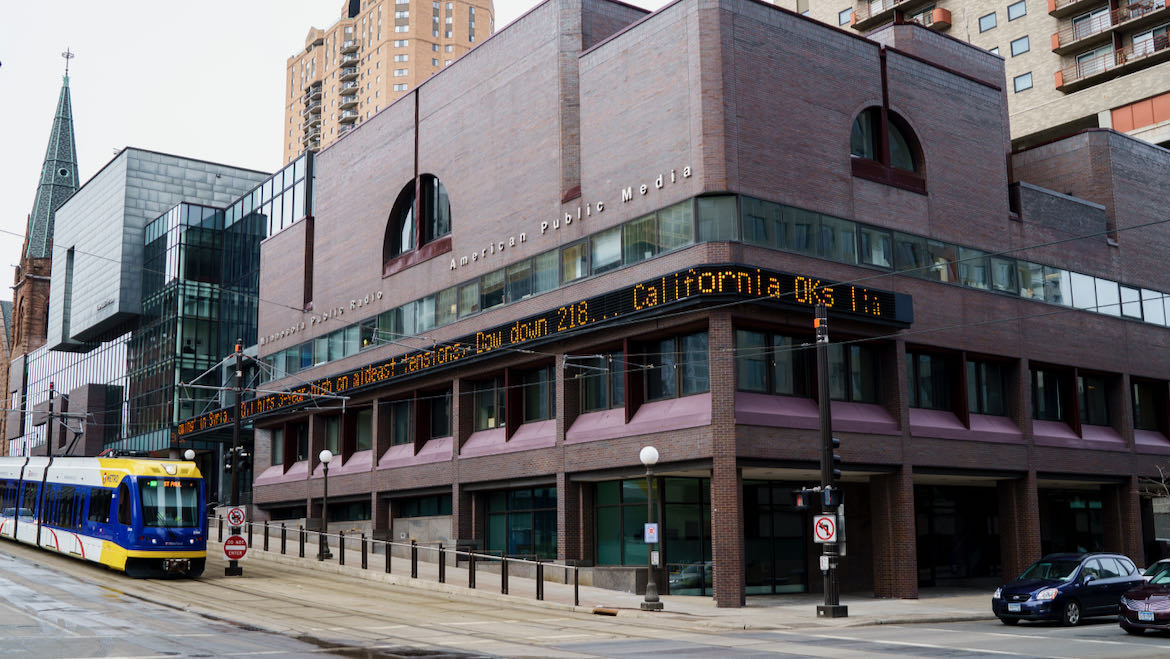Fla. station takes cue from Mister Rogers in discussing traumatic events with kids

In WUCF's "Meet the Helpers" campaign, Dr. Brandon Carr explains his job and how he helps in times of trauma.
Among the many reassuring messages that young children heard on Mister Rogers’ Neighborhood during its decades on PBS, host and producer Fred Rogers encouraged his viewers to “look for the helpers” whenever they saw news coverage of scary events.
WUCF in Orlando, Fla., has adopted this philosophy in its response to mass shootings and natural disasters that have affected its community.
To help children cope with these traumatic experiences, WUCF is producing a new video series, “Meet the Helpers,” which aims to familiarize children with emergency responders, such as firefighters and doctors, according to Jennifer Cook, WUCF Director of Communications.
The initiative began after the 2016 Pulse Nightclub shooting in Orlando. Since the station doesn’t operate a newsroom, WUCF decided to become a “hub of the helpers.” It created spots and online content advising community members about where to receive or provide help in response to the event, Cook said.

Cook
The conversation quickly shifted. Within 24 hours, the station began receiving questions on how to explain the event to kids and help them cope with their fears.
“We started getting a lot of questions … saying, ‘That’s great and we love this, but how do I talk to my kids about this shooting?’” Cook said. “That sparked us to think about it differently as well.” The station reached out to educators for advice on how parents and teachers can talk to children about traumatic events.
Working with Judith Levin, a professor and expert in early childhood development and education at the University of Central Florida, and other community organizations, the station developed a series of interstitials that introduce common “helpers” to kids, according to Catherine Hiles, manager of education and community engagement.
Based on Levin’s insights, the initiative is structured around the importance of giving kids an opportunity “to meet these helpers in a safe environment before something traumatic happens,” Hiles said. After receiving these messages when they feel safe and secure, children are more likely to feel less anxious about accepting assistance during times of emergency.
Videos now in production also feature a sheriff’s deputy, a teacher, a meteorologist, a 911 operator and an emergency medical technician. Each “helper” appears separately in spots that run during program breaks and as streaming videos posted on WUCF’s website, according to Cook. WUCF is also sharing the videos on social media platforms.
Three videos will be produced surrounding each helper, Hiles said. In a generic, 50-second video, the helper explains their general job responsibilities. Another 50-second spot is intended for use during times of emergency, focusing specifically on that particular helper’s role in the midst of crises. A longer video of up to five minutes will be tailored for classroom use to present potential career paths to students. WUCF will add the longer videos to PBS LearningMedia.
WUCF plans to release the videos in June, in a “preparedness push” that corresponds to the beginning of hurricane season, Hiles said. Florida PBS will distribute the videos to all Florida stations and WUCF also intends to offer them for free nationally to any stations that are interested, Cook said.
“Ideally we’ll distribute this as a toolkit for stations, so when there is an emergency or a traumatic event in a community, we can send these resources to that station and they can immediately start responding regardless of their ability to cover the news or the events of the day,” Hiles said.

Hiles
So far WUCF has screened sample videos for two focus groups of young children. Feedback from preschoolers and a group of early elementary students guided producers on messaging and delivery style for each helper, according to Hiles.
“The language is important,” Hiles said. “We don’t want to speak down to them, which was an important part of how we’re creating the helpers. We want to meet them where they are and give them some tools to help in their own coping.”
Presentation style also matters in communicating information in a non-threatening way and in combating contradictory media messages that may villainize public safety officials.
“We were told … to make sure that the helper is looking directly at the camera and really talking to children,” Cook said. “It’s a little bit like the Mister Rogers approach of treating kids like they’re smart and making sure you’re telling them the truth, and not to be scary.”
In addition to the videos, WUCF has added meet and greets with emergency responders to its annual Be My Neighbor Day event. Children get to talk with policemen and firemen, for example, sit inside their emergency vehicles and ask questions about the work they do. Their participation allows WUCF “to extend that experience beyond just the screen” and create more tangible relationships for children, Cook said.
Hiles believes it’s important for stations to be ready to respond to traumatic events in ways that help alleviate the fears and anxieties of children in their audience.
“What we realized from this project is that … tragedies aren’t going to stop happening,” Hiles said. “The best thing that we can do is to prepare ourselves and prepare other stations to be able to respond to tragedies if and when they happen in their own communities.”





